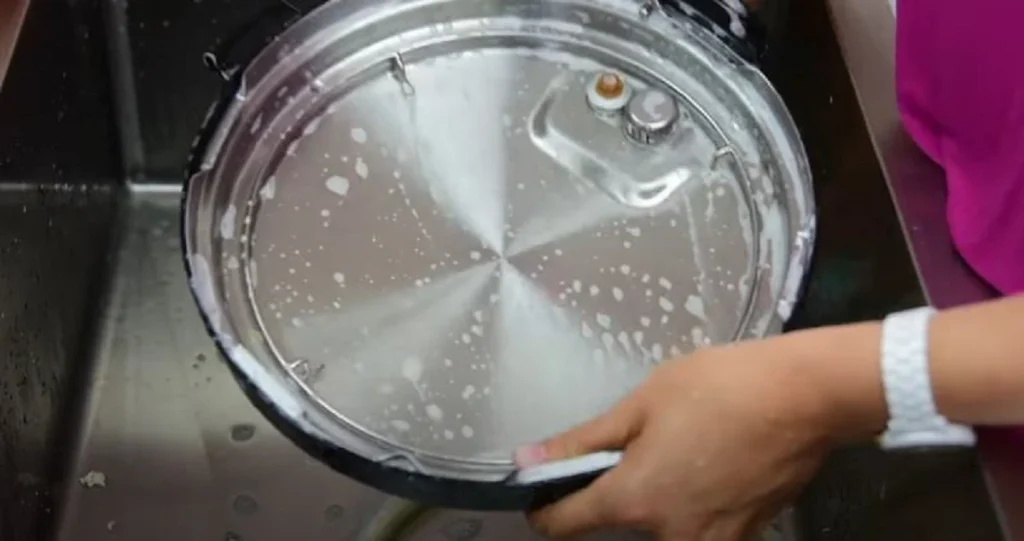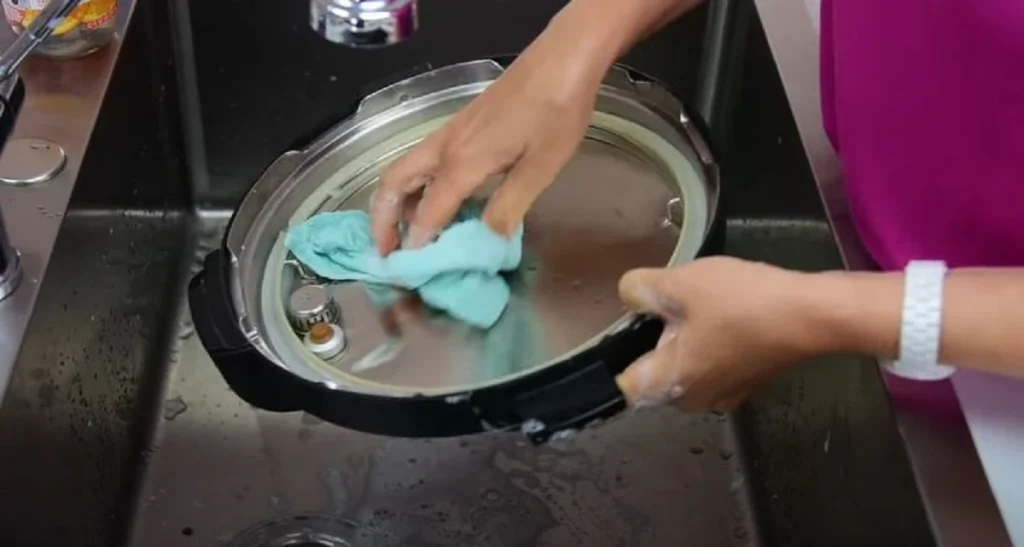Best Practices for Cleaning Instant Pot Lids

Yes, you can wash the Instant Pot lid, and knowing the right way to do it is key. Most parts of the Instant Pot, such as the stainless steel inner pot, the lid, the sealing ring, and the steam rack, are designed to be dishwasher safe. The lid, especially, requires attention to ensure it remains in good condition.
When washing the Instant Pot lid, it’s essential to remove the anti-block shield and sealing ring. These parts can be washed separately in warm, soapy water.
For a thorough clean, you can place the lid on the top rack of your dishwasher. This is particularly helpful after preparing multiple meals, as it helps prevent odors and residue buildup. If you prefer manual cleaning, dishwashing liquid and a brush is effective.
Be sure to let the lid air dry completely after washing. In cases where the lid is only lightly soiled, such as with condensation water, a simple rinse under tap water or a wipe with a damp cloth may suffice.
The silicone seal, a crucial component of the lid, should also be removed and washed separately. Hand-washing it with hot, soapy water is recommended. Allow all parts, especially the silicone ring, to dry completely before reassembling.
How to Properly Clean Your Instant Pot Lid?
Cleaning your Instant Pot lid is a simple process that requires a few basic tools: a soft sponge or cloth, mild dish soap, and warm water. It’s also helpful to have a small brush or toothbrush for reaching into crevices.
Disassembling the Lid
Step 1: Remove the Sealing Ring
Gently pull the silicone sealing ring out from the lid. It’s flexible, so don’t worry about bending it.
Step 2: Take Off the Anti-Block Shield
This small, circular component snaps right off. Just push it from one side and lift it up.
Washing the Lid
Step 1: Rinse with Warm Water
Hold the lid under running warm water to remove any loose food particles.
Step 2: Apply Mild Dish Soap
Use a soft sponge or cloth to apply dish soap on the lid, especially focusing on areas with food residue.
Step 3: Scrub Gently
Use the sponge or cloth to scrub the lid gently. For tighter spots, like around the steam release valve, use a small brush or toothbrush.
Step 4: Rinse Thoroughly
Make sure all soap is rinsed off, as residue can affect the lid’s functionality.
Cleaning the Sealing Ring and Anti-Block Shield
Step 1: Soak in Soapy Water
Submerge the sealing ring and anti-block shield in warm, soapy water for a few minutes.
Step 2: Scrub and Rinse
Gently scrub them with a sponge or cloth, then rinse thoroughly.
Drying and Reassembling
Step 1: Air Dry All Parts
Let the lid, sealing ring, and anti-block shield air dry completely. Avoid using towels as they can leave lint.
Step 2: Reassemble the Lid
Once dry, place the sealing ring back into its groove in the lid. Then, snap the anti-block shield back into place.

Safely Washing Instant Pot Lids in Dishwashers
Washing Instant Pot lids in a dishwasher is not only safe but also efficient. The process involves understanding the right dishwasher settings and placement techniques to ensure the lid is cleaned without damage.
First, it’s crucial to use a mild detergent and avoid harsh chemicals that could damage the lid’s components. Opt for a gentle cycle in the dishwasher, which is effective yet less abrasive.
For optimal cleaning, place the Instant Pot lid on the top rack of the dishwasher. This position exposes the lid to enough water flow and heat without the intensity that could warp or damage it.
Ensure that the anti-block shield and sealing ring are removed before placing the lid in the dishwasher, as these parts require more delicate handling.
Cleaning the lid in the dishwasher after every few uses is a good practice. It helps prevent the build-up of food residues and keeps the lid in top condition. Following these steps will keep your Instant Pot lid clean and maintain its longevity.
Read More: Anti-Block Shield in Instant Pot: What You Need to Know
Odor Removal from Instant Pot Lids
Understanding Odor Causes
Odors in Instant Pot lids often result from food residues and long-term steam condensation. These odors can become trapped in the silicone sealing ring or in the crevices of the lid.
Natural Deodorizers
Baking soda and vinegar are effective natural deodorizers. Create a mixture of water, baking soda, and a few drops of vinegar. Soak the lid, especially the silicone ring, in this solution for a few hours.
Soaking Methods
For deeper odors, soak the lid and sealing ring overnight in the baking soda and vinegar solution. This prolonged soaking helps in breaking down the odor-causing residues.
Preventive Measures
To prevent odors, rinse the lid with water after each use and dry it thoroughly. Periodically, use the natural deodorizing soak as part of routine maintenance.

Maintaining Instant Pot Air Fryer Lids: A Guide to Cleanliness
Maintaining Instant Pot Air Fryer lids requires a bit more attention due to their specific design and function. Begin by disassembling the lid, taking care to remove any parts that are detachable, such as the air fryer basket or internal racks.
For cleaning agents, opt for mild dish soap that won’t corrode or damage the lid’s surface. A soft sponge or cloth is ideal for wiping down the lid without scratching it. For tougher stains or grease, a non-abrasive scrubber can be used gently on the affected areas.
Reassembling the lid after cleaning is just as important. Ensure all parts are completely dry to avoid any moisture-related issues.
Follow the manufacturer’s guidelines for reassembly to ensure everything is put back correctly, maintaining the functionality and efficiency of your air fryer lid.
Best Practices for Instant Pot Lid Longevity
Ensuring the longevity of your Instant Pot lid involves a combination of regular cleaning, careful handling, and proper storage. Clean the lid after every few uses to prevent the buildup of food particles and grease, which can deteriorate the quality over time.
In terms of wear and tear prevention, handle the lid gently, especially when disassembling and reassembling. Avoid using abrasive cleaners or scrubbers that can scratch or damage the surface and components of the lid.
Storing the Instant Pot lid correctly is also crucial. Keep it in a dry, cool place away from direct sunlight or extreme temperatures. If possible, store it separately from the base to avoid unnecessary pressure or damage to the sealing ring.
Incorporating these routine maintenance tips into your kitchen habits will significantly extend the life of your Instant Pot lid, ensuring many years of efficient and safe cooking.







